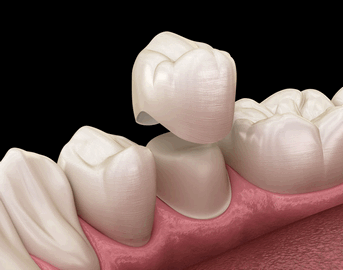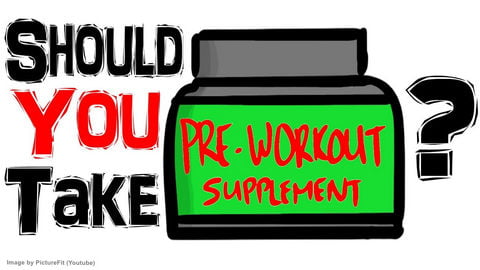A QUICK GLANCE…
The duration of swelling can vary depending on the underlying cause and individual factors, but typically it can last anywhere from a few days to a few weeks. Swelling is a natural response of the body to inflammation or injury, and it is part of the healing process. Applying ice, elevating the affected area, and taking over-the-counter anti-inflammatory medications can help reduce swelling and expedite the healing process. However, if the swelling persists for an extended period, is accompanied by severe pain or other concerning symptoms, it is advisable to seek medical attention to determine the underlying cause and appropriate treatment.

Have you ever experienced swelling in your body? Whether it’s a sprained ankle or the aftermath of a surgery, swelling can be uncomfortable and even painful. One of the most common questions people ask is, ‘How long does swelling last?’
Well, the answer depends on various factors, including the type and severity of the swelling, as well as the cause.
There are two types of swelling: acute and chronic. Acute swelling is the initial response of the body to an injury or inflammation. It can last for a few days or up to two weeks.
Chronic swelling, on the other hand, is a long-term condition that persists for weeks, months or even years, and is often associated with underlying medical conditions such as lymphedema or arthritis.
In this article, we’ll explore the different types of swelling and their respective durations, along with some tips and strategies for managing swelling effectively.
Types of Swelling
You’ll learn about different kinds of swelling and what they look like in this section. Swelling can occur in various parts of the body, and it can have different causes.
Swelling after injury is one common type of swelling that can occur in the affected area. It usually happens when the body sends extra fluids to the injured area to protect it and promote healing. The affected area may appear red, warm, and tender to the touch. Swelling after injury can also cause stiffness and limited range of motion.
Another kind of swelling that can happen is swelling in pregnancy. This type of swelling usually occurs in the legs, ankles, and feet. It happens because the body retains more fluid during pregnancy to support the growing fetus. The swelling can be more noticeable during the third trimester, and it can be exacerbated by standing or sitting for long periods. Although swelling in pregnancy is usually harmless, it’s important to monitor it and report any sudden or severe swelling to your healthcare provider.
Swelling can have different causes and manifestations. Some types of swelling can be harmless, while others can be a sign of an underlying condition. If you’re experiencing swelling, it’s important to consult your healthcare provider to determine the cause and appropriate treatment.
In the next section, we’ll talk about how long swelling can last and what you can do to reduce it.
Causes of Swelling
Understanding what causes swelling can help you take actions to alleviate discomfort and promote healing. Swelling can be triggered by a variety of factors, including injury, infection, inflammation, and fluid retention.
Common triggers of swelling include sprains, strains, bites, stings, fractures, surgery, and allergies. Prevention strategies for swelling depend on the underlying cause, but may include rest, elevation, compression, and ice. Treatment options for swelling may range from over-the-counter pain medications to prescription drugs, physical therapy, or surgery.
Understanding swelling involves knowing the mechanisms behind inflammation and edema formation. Inflammation is the body’s response to injury or infection, characterized by redness, swelling, heat, and pain. It involves the release of chemicals such as histamine, prostaglandins, and cytokines, which cause blood vessels to dilate and become more permeable, allowing immune cells and fluid to enter the affected area.
Edema is the accumulation of excess fluid in tissues, caused by increased capillary pressure, decreased osmotic pressure, or impaired lymphatic drainage. It can result in swelling, stiffness, and reduced mobility.
The duration of swelling depends on the cause, severity, and treatment of the underlying condition. Acute swelling usually subsides within a few days to a few weeks, while chronic swelling may last for months or even years. However, excessive or prolonged swelling can lead to complications such as impaired circulation, tissue damage, and infection.
If you experience swelling that does not improve with rest, elevation, and other self-care measures, or if you have other symptoms such as fever, chills, or difficulty breathing, seek medical attention promptly.
Duration of Acute Swelling
When you’re dealing with acute swelling, it can feel like an eternity waiting for it to go down, but with proper treatment and care, the discomfort and pain will eventually subside.
Swelling after an injury or surgery is a natural part of the healing process. The body’s response to injury is to increase blood flow to the affected area, bringing nutrients and immune cells to help repair the damage. But this increased blood flow also leads to swelling, which can cause pain, stiffness, and limited mobility.
The duration of acute swelling can vary depending on the severity of the injury or surgery. Generally, it can last anywhere from a few days to a few weeks. During this time, it’s important to rest the affected area and avoid any activities that may exacerbate the swelling.
Applying ice or a cold compress to the area can help reduce inflammation and pain. Elevating the affected area can also help reduce swelling by promoting drainage of excess fluid.
As the body heals, the swelling will gradually subside. However, it’s important to monitor the swelling and seek medical attention if it persists or worsens. In some cases, swelling may indicate an underlying condition that requires further treatment.
By following proper care and treatment guidelines, most acute swelling can be managed effectively and will eventually go away on its own. Remember to be patient, take care of yourself, and seek medical attention if necessary.
Duration of Chronic Swelling
If you’ve been dealing with swelling for a while now, it can be frustrating and discouraging, but it’s important to understand that chronic swelling can persist for a variety of reasons.
It may be caused by underlying conditions such as heart, liver or kidney disease, lymphedema or chronic venous insufficiency. Swelling may also be a side effect of certain medications, or result from a previous injury or surgery.
Identifying the underlying cause of swelling is crucial in determining the best course of treatment.
There are several treatment options available for chronic swelling. Depending on the cause, your doctor may recommend lifestyle changes such as exercise, weight management, and elevating the affected area to reduce swelling. Compression stockings or garments may also be recommended to improve circulation and reduce fluid buildup.
In severe cases, surgery may be necessary to remove excess fluid or repair damaged tissue.
It’s important to note that chronic swelling may last for weeks, months, or even years depending on the underlying cause and effectiveness of treatment. It’s essential to maintain open communication with your healthcare provider and follow their recommendations for managing swelling to improve your quality of life.
With proper diagnosis and treatment, it’s possible to manage chronic swelling and reduce the risk of complications such as infection or skin breakdown.
Managing Swelling: Tips and Strategies
Managing swelling can be a challenging task, especially when it’s chronic and lasts for a long period of time. However, there are ways to alleviate discomfort and improve your quality of life.
Swelling prevention is key, and there are several things you can do to reduce the possibility of swelling. These include staying hydrated, maintaining a healthy diet, and exercising regularly.
Natural remedies can also be effective in managing swelling. Some of the most popular natural remedies include eating anti-inflammatory foods like ginger and turmeric, using essential oils like lavender and peppermint, and applying cold compresses to the affected area. These remedies can help reduce inflammation and provide relief from the discomfort associated with swelling.
In addition to these remedies, there are other strategies you can use to manage swelling. For example, you can elevate the affected area, wear compression garments, and avoid standing or sitting for long periods of time.
It’s important to find what works best for you, as everyone’s body is different. By incorporating these tips and strategies into your daily routine, you can manage swelling and improve your overall quality of life.
Conclusion
Overall, swelling can be a frustrating and uncomfortable experience to deal with. It’s important to understand the causes, types, and duration of swelling in order to properly manage it.
Acute swelling usually subsides within a few days to a week, while chronic swelling can persist for a longer period of time. Proper care and management can help reduce the duration and severity of swelling, including elevating the affected area, applying ice, taking anti-inflammatory medication, and staying hydrated.
Always consult with a healthcare professional if you’re experiencing persistent or severe swelling. With the right approach, swelling can be effectively managed and minimized.





